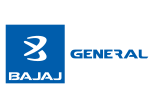PNB Metlife Century Plan Benefits
Recognised as one of the leading life insurance companies in India, PNB Metlife offers some of the best life insurance plans. It was in the year 2013 that the company rebranded itself as PNB Metlife and currently, it has over 150 branches all over the country. Recently, the company launched the PNB Metlife Century plan. Scroll through the section to learn more about PNB Metlife Century Plan.
Table of Contents
Overview of PNB Metlife Century Plan

PNB Metlife Century Plan is an individual, non-linked, participating, savings, life insurance plan that provides the benefit of both insurance and investment. This plan provides life insurance protection till teh age of 100 years and is thus one of the most popular plans offered by PNB Metlife. This plan is available in different options such as Super Income Option, Smart Income Option, Future Income Option, and more.
The eligibility criteria for buying the PNB Metlife Century plan are as follows:
|
Parametres |
Eligibility Criteria |
|
Minimum entry age |
30 days |
|
Maximum entry age |
60 years |
|
Maturity age |
80-100 years |
|
Premium payment term |
5-15 years |
Benefits of PNB Metlife Century Plan
Listed below are some of the benefits of buying the PNB Metlife Century Plan:
- The PNB Metlife Century Plan provides life insurance protection till the age of 100 years. Thus, with this whole-life plan, you can ensure protection for a lifetime.
- Through the family care benefit, the nominees can still get survival benefits even if the policyholder has met an unfortunate death.
- As this plan offers an income option, you can secure your post-retirement days with the PNB Metlife Century plan.
- This plan also offers the option to accumulate all the survival benefits and use all of it for payouts as and when required.
- The PNB Metlife Century Plan also offers the option to choose from three different income options. So, depending on your life insurance stage, you can choose a desired income option. The three different income options available are the Super Income Option, Smart Income Option, and, Future Income Option.
- Policyholders also have the choose the mode of survival benefit payout. You can choose income payout frequency from either annual, half-yearly, quarterly, or monthly. On the other hand, policyholders can also choose the payout date as per their choice.
- With the PNB Metlife Century plan, policyholders are also given death benefits. This means that if the policyholder meets an unfortunate death, then a specific amount is paid as a death benefit to the policyholder.
- You can also include a number of riders such as accidental death benefit, critical illness rider, etc to further enhance the plan benefits. However, these riders are available at higher premiums.
- You can also save on tax as per the Income Tax Act of 1961 along with the PNB Metlife Century Plan.
- Different kinds of bonuses are also paid along with the PNB Metlife Century Plan such as reversionary bonus, terminal bonus, and a few more. This means that along with the usual benefits, policyholders are also given the advantage of additional bonuses.
- The PNB Metlife Century plan also works as a loan collateral. This meanss that you can use the plan to get loans from different financial institutions.
Cons of Buying PNB Metlife Century Plan
Some of the cons of buying PNB Metlife Century Plan are as follows:
- If the policyholder dies due to suicide within 1st year of the policy, then only a certain amount of money will be paid to the nominees.
- If the policyholder breaches any kind of law as stated in the policy, then no policy benefits will be paid out to the policyholder.
Take Away
Thus, the PNB Metlife Century is one of the best investment plans if you want the benefit of both insurance and investment under one plan.




























